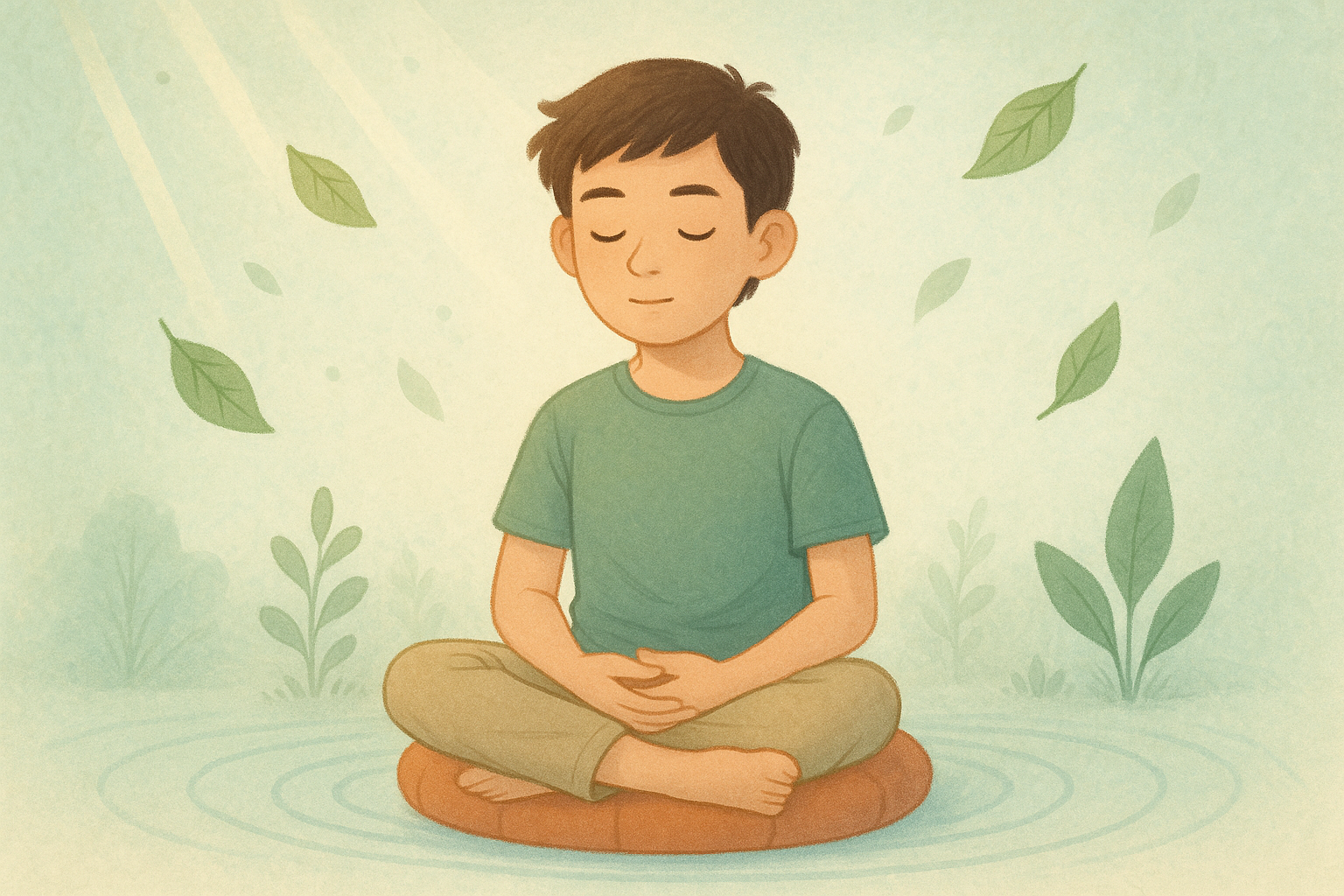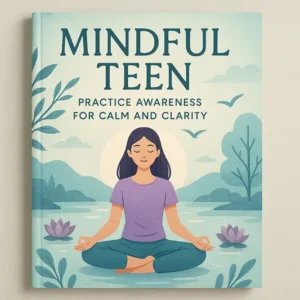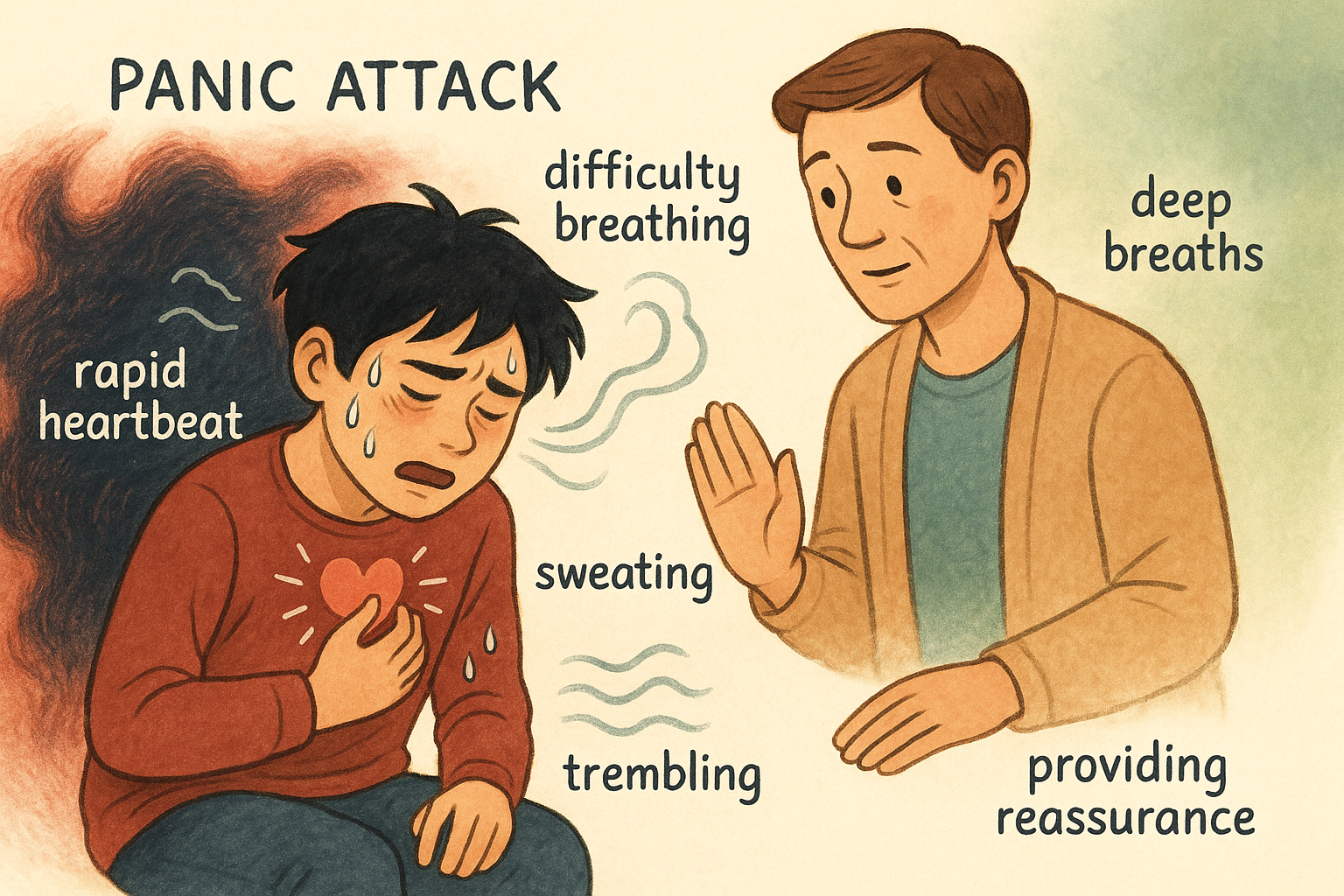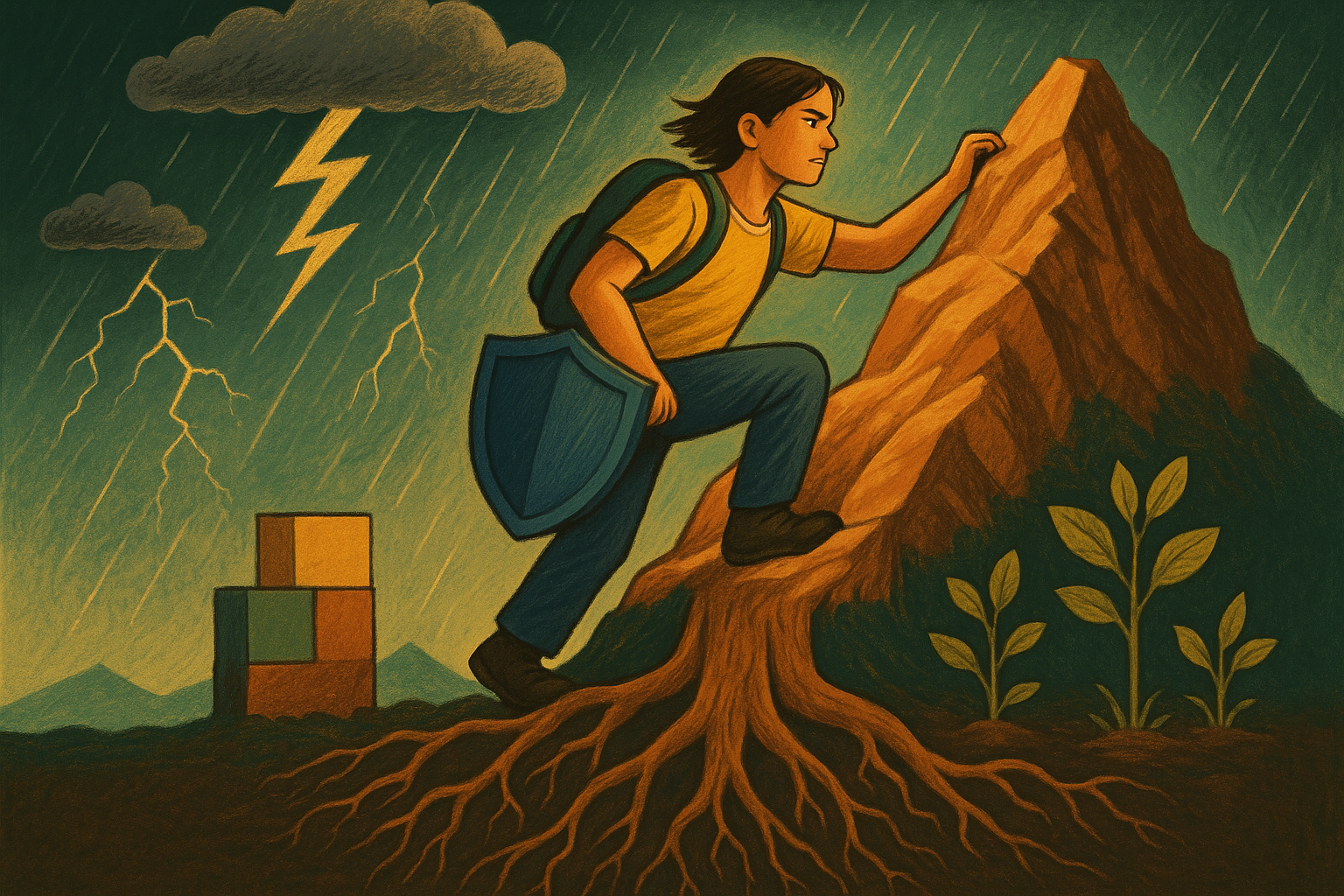Mindfulness has emerged as one of the most effective, evidence-based approaches for managing teen anxiety. Unlike complex therapeutic interventions, mindfulness practices for teens are simple, accessible, and can be integrated into daily life without requiring special equipment or extensive training.
What is Mindfulness for Teens?
Mindfulness is the practice of paying attention to the present moment without judgment. For anxious teens, this means learning to observe their thoughts and feelings without being overwhelmed by them. Rather than getting caught up in worries about the future or regrets about the past, mindfulness helps teens stay grounded in the here and now.
Why Mindfulness Works for Teen Anxiety
Breaks the Worry Cycle: Anxiety often involves repetitive, anxious thoughts that spiral out of control. Mindfulness teaches teens to observe these thoughts without getting caught up in them.
Increases Self-Awareness: By becoming more aware of their thoughts, emotions, and physical sensations, teens can recognize anxiety triggers earlier and respond more effectively.
Reduces Reactivity: Mindfulness creates space between experiencing a trigger and reacting to it, allowing teens to choose their response rather than being driven by anxiety.
Improves Emotional Regulation: Regular mindfulness practice strengthens the brain’s capacity to manage difficult emotions and stress.
Simple Mindfulness Techniques for Daily Life
1. The 5-4-3-2-1 Grounding Technique
This technique helps anxious teens quickly ground themselves in the present moment:
- Name 5 things you can see
- Name 4 things you can touch
- Name 3 things you can hear
- Name 2 things you can smell
- Name 1 thing you can taste
This exercise can be done anywhere and helps interrupt anxious thoughts by focusing attention on immediate sensory experiences.
2. Mindful Walking
Perfect for teens who find sitting still difficult, mindful walking combines physical movement with mindfulness:
- Walk slower than usual
- Focus on the sensation of feet touching the ground
- Notice the rhythm of your steps
- Pay attention to your surroundings without judgment
- When your mind wanders, gently return focus to walking
3. Mindful Breathing
The breath is always available as an anchor to the present moment:
- Sit comfortably and close your eyes
- Notice your natural breathing rhythm
- Focus on the sensation of air entering and leaving your nose
- When thoughts arise, acknowledge them and return to the breath
- Start with 2-3 minutes and gradually increase
4. Body Scan Meditation
This technique helps teens become aware of physical tension and release it:
- Lie down comfortably
- Start at the top of your head
- Slowly move attention through each part of your body
- Notice any tension or sensations without trying to change them
- Breathe into areas of tension and allow them to relax
5. Mindful Listening
This practice can be done with music, nature sounds, or ambient noise:
- Sit quietly and listen to sounds around you
- Don’t label or judge the sounds
- Simply observe them as they come and go
- When your mind wanders, return to listening
Integrating Mindfulness into Daily Routines
Morning Mindfulness: Start the day with 5 minutes of mindful breathing or intention setting to create a calm foundation for the day ahead.
Transition Moments: Use brief mindfulness practices between activities, such as taking three deep breaths before entering a classroom or eating lunch mindfully.
Study Breaks: Incorporate short mindfulness exercises between study sessions to refresh the mind and reduce academic stress.
Bedtime Practice: End the day with a body scan or mindful breathing to promote relaxation and better sleep.
Mindfulness Apps and Resources for Teens
While not necessary, technology can support mindfulness practice:
Guided Meditations: Apps like Headspace, Calm, or Insight Timer offer teen-specific guided meditations and mindfulness exercises.
Reminder Systems: Use phone alerts or calendar reminders to establish regular practice times.
Mindfulness Journals: Encourage teens to write about their mindfulness experiences and notice patterns in their anxiety.
Overcoming Common Obstacles
“I Can’t Stop Thinking”: Remind teens that the goal isn’t to stop thoughts but to notice them without getting swept away. Thoughts are normal and expected.
“I Don’t Have Time”: Even 30 seconds of mindful breathing can be beneficial. Quality matters more than quantity, especially when starting.
“It Feels Weird”: Like any new skill, mindfulness may feel uncomfortable at first. Encourage teens to stick with it and notice gradual changes.
“I’m Too Anxious to Sit Still”: Start with movement-based practices like mindful walking or gentle stretching.
Building a Sustainable Practice
Start Small: Begin with just 1-2 minutes of practice daily and gradually increase as comfort grows.
Be Consistent: Regular, brief practice is more effective than occasional long sessions.
Make it Personal: Encourage teens to find the techniques that resonate most with them and adapt practices to their preferences.
Practice Self-Compassion: Missed days or “unsuccessful” sessions are part of the learning process. Encourage a kind, non-judgmental approach.
Mindfulness in Crisis Moments
When anxiety peaks, teens can use quick mindfulness techniques:
STOP Technique:
- Stop what you’re doing
- Take a breath
- Observe what’s happening in your mind and body
- Proceed with awareness
Three Breath Reset: Take three slow, deep breaths while focusing entirely on the sensation of breathing.
The Science Behind Mindfulness for Teen Anxiety
Research shows that regular mindfulness practice can actually change brain structure and function, particularly in areas related to emotional regulation, attention, and stress response. For teens, whose brains are still developing, these benefits can be especially profound and long-lasting.
For comprehensive support in developing mindfulness skills and managing teen anxiety, visit StillNest Health. Our Parent & Teen Anxiety Guides provide personalized guidance in mindfulness-based approaches to teen mental health.
Remember, mindfulness is a skill that develops over time. With patience and consistent practice, teens can learn to use these powerful techniques to manage anxiety and enhance their overall well-being.
Explore additional mindfulness resources and teen anxiety support at StillNest Health.
Related Help Guide Downloads
-
Complete Teen Anxiety & Wellness Bundle – Full 10 Guide Collection
Original price was: $153.00.$79.00Current price is: $79.00. -
Stress Less, Live More – Complete Teen Guide to Managing Anxiety and Building Resilience
Original price was: $27.00.$17.00Current price is: $17.00. -
Mindful Teen: Meditation & Mindfulness For Teen Stress Made Simple
Original price was: $32.00.$17.00Current price is: $17.00. -
41 Natural Anxiety Busting CBT Techniques | Complete Guide
Original price was: $27.00.$12.00Current price is: $12.00.







